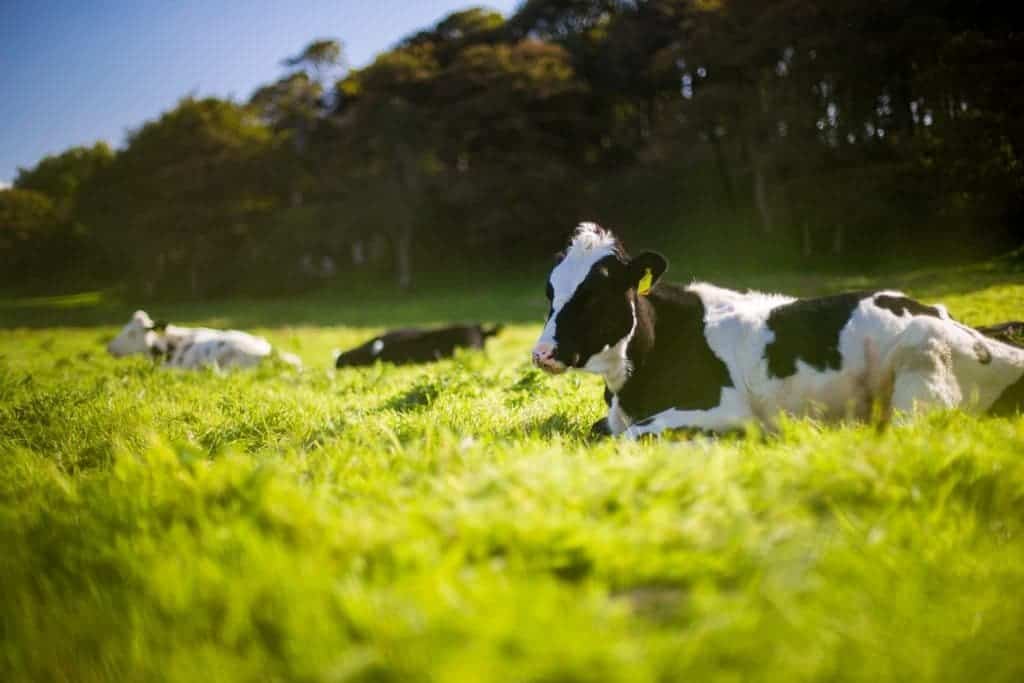
A new review of eight existing studies published in the journal Environmental Research Letters has found that livestock farms and feedlots in North America may be emitting far more methane than previously assumed. The researchers from New York University and Johns Hopkins University found that the Environmental Protection Agency (EPA) — which estimates methane from livestock as part of a greenhouse gas inventory — does not verify its estimates by measuring concentrations of the gas in the air.
They say this omission is significant.
“North American meat and dairy producers often tout improvements in their efficiency, claiming that concentrated feeds and confinement have reduced greenhouse gas emissions greatly over the past few decades,” observes Matthew Hayek, an assistant professor in NYU’s Environmental Studies Department and a co-author of the paper. “Our findings throw those claims into doubt. Individual cows may be belching and emitting less, but that doesn’t necessarily translate to entire herds and warehouses of confined animals, and their stockpiles of manure, emitting less.”
The scientists note that other countries may have cause for concern in the future, too. For instance, throughout Asia, meat and dairy consumption is on the uptick, and this production is becoming increasingly industrialized, a 2020 investigative report shows. The United Nations Food and Agriculture Organization previously predicted that East and Southeast Asia’s animal emissions will peak around 2030 because U.S.-style technological efficiency in Asia could reduce emissions afterward.
However, another study released the same week found that changes in farming practices could help reduce emissions.
A paper by Dr. Gidon Eshel, a research professor of environmental physics at Bard College, in the open-access journal PLOS Biology, found that small-scale mixed-use agriculture which avoids synthetic fertilizers in favor of manure could eliminate agricultural greenhouse gas emissions if established across the United States’ 100 million hectares cropland.
“While small-scale regenerative farming has been promoted for many years, nobody quite knew whether it can feed the populace,” he says. “Without taking sides in this raging debate, I set out to agnostically test whether such practices can or cannot produce enough food. I developed a mathematical model of such farms dotting the contiguous U.S. landscape, but only where precipitation is bountiful and the soil of high quality, and found that such farms can in fact handily feed the U.S., including delivering four fifths of today’s beef consumption and quite dramatically improve nutrition and by extension public health.”
However, to create this impact, says Eshel, American beef consumption would have to decrease by 20%. According to the EPA, agriculture is responsible for 10% of U.S. greenhouse gas emissions.
The professor states that beef is the most resource-intensive food item that we eat. For every gram of protein, beef uses seven times more cropland and 20 times as much water and emits 11 times the greenhouse gases. At the same time, cattle manure is a valuable source of natural fertilizer. Nitrogen-sparing agriculture avoids external inputs of nitrogen, such as synthetic fertilizers, instead relying on cattle manure and nitrogen-fixing crops to replenish soil nutrients.
With almost 200 parties in the Paris Agreement trying to cut global warming to below two degrees Celsius above pre-industrial levels, the authors of the NYU / Johns Hopkins study say that cutting emissions is essential.
“This evidence suggests that the banks and government agencies who are funding intensive animal facilities’ expansion might be accepting more climate risk than they realize,” says Hayek. “Policymakers should consider methane emissions along with a gamut of other major environmental issues stemming from concentrated meat and dairy production, including water pollution and infectious animal-borne disease breakouts, to inform policies that guide food systems toward a better direction.”
Was this helpful?



